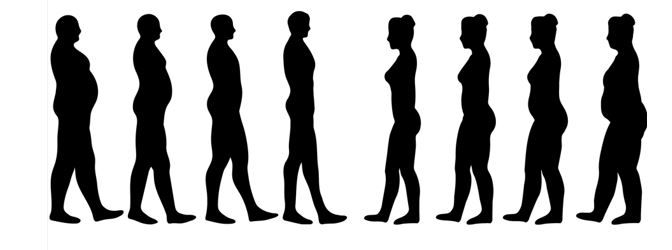©brovarky/stock.adobe.com

Among a cohort of individuals with overweight or obesity, treatment with tirzepatide (Mounjaro) resulted in additional weight reduction of 21% following a 12-week intensive lifestyle intervention, according to data from the SURMOUNT-3 clinical trail presented during Obesity Week 2023, October 14-17, 2023, and published simultaneously in the journal Nature Medicine.
Study participants treated with tirzepatide had already achieved weight loss of 5% or more during the lifestyle lead-in phase, for a total mean reduction in weight of 26% from baseline to week 84 of the phase 3 trial, the study authors reported.
Lifestyle intervention in the population with obesity typically results in average reductions of 5% to 8% of baseline weight as well as improvements in health, wrote corresponding author Thomas Wadden, PhD, emeritus professor of psychiatry and director, weight and eating disorders at Penn Medicine, in Philadelphia, PA, and colleagues. To reach optimal control of obesity-related complications and reduce the risk of cardiovascular mortality, however, weight loss of at least 15% is required, a percentage that fewer than 20% of patients achieve with lifestyle change alone, according to the authors. Further, regain of one-third of weight lost is common during the year following a lifestyle intervention and typically continues, they wrote.
Injected once weekly, tirzepatide is a novel combination glucose-dependent insulinotropic polypeptide (GIP) receptor /glucagon like peptide-1 (GLP-1) receptor agonist approved by the US Food and Drug Administration in May 2022 as an adjunct to diet and exercise to reduce hyperglycemia in persons with type 2 diabetes (T2D). SURMOUNT-3 is part of a global clinical development program investigating use of the drug for chronic weight management.
To reach optimal control of obesity-related complications and reduce the risk of cardiovascular mortality, however, weight loss of at least 15% is required, a percentage that fewer than 20% of patients achieve with lifestyle change alone. Further, regain of one-third of weight lost is common during the year following a lifestyle intervention and typically continues.
The randomized, double-blind, placebo-controlled trial evaluated tirzepatide against placebo in adults with overweight or obesity with weight-related comorbidities, excluding T2D, for 72 weeks after an initial 12-week lifestyle intervention that included a low-calorie diet, exercise, and weekly counseling sessions.
SURMOUNT-3 participants who lost 5% or more of their baseline weight during the lifestyle lead-in were randomly assigned to receive a maximally tolerated dose of 10 mg or 15 mg tirzepatide or placebo once weekly for 72 weeks. Of the original 806 participants enrolled, 579 (71.8%) were eligible for random assignment.
Investigators established coprimary endpoints to compare tirzepatide vs placebo on additional mean percent weight change from random assignment and percentage of participants with weight loss of 5% or more from randomization to the end of the trial.1Wadden et al report that mean body weight at study entry was 109.5 kg.
FINDINGS
The investigators reported the mean change in body weight at week 72 for the efficacy estimand was -21.1% among tirzepatide-treated participants compared with an increase of 3.3% among those treated with placebo (estimated treatment difference [ETD], −24.5 percentage points; 95% CI, −26.1 to −22.8; P < .001).
For the treatment regimen estimand, researchers found a mean change in body weight at week 72 of −18.4% with tirzepatide and 2.5% with placebo (ETD, −20.8 percentage points; 95% CI, −23.2 to −18.5; P < .001).
For the coprimary endpoint, the research team reported the percentage of participants achieving additional weight reduction of 5% or greater was met by 87.5% of the tirzepatide group compared to 16.5% of the placebo group (odds ratio, 34.6; 95% CI 19.2 to 62.6; P < .001).

Further, according to the study, more participants in the tirzepatide group reached reductions in body weight of 10% or more, 15% or more, and 20% or more from randomization (P < .001).
Importantly, the authors also reported that at week 72, for the treatment regimen estimand, 94.0%of tirzepatide-treated participants maintained 80% or more of the weight lost during the 12-week lead-in period compared with 43.8% in the placebo group (OR 19.7; 95% CI 10.3, 37.6; P < .001). For the corresponding efficacy estimand, 98.6% of participants in the tirzepatide group met the endpoint vs 37.8% in the placebo group (OR 101.6; 95% CI 39.2, 263.6; P < .001).
The safety profile of tirzepatide observed in SURMOUNT-3 was consistent with other trials in the SURMOUNT and SURPASS clinical programs and predominantly gastrointestinal, as is typical of the GLIP-1 receptor class in persons with obesity or type 2 diabetes, the authors wrote.
These findings indicate that individuals with overweight or obesity who have lost approximately 5–10% of their body weight with supervised lifestyle intervention—or potentially through their own self-directed diet and exercise efforts—could expect to achieve further clinically meaningful weight loss with the addition of tirzepatide.” They also point out that “much remains to be learned about how lifestyle intervention and the new incretin-based antiobesity medications can be optimally used together.”
Source: Wadden TA, Chao AM, Machineni S, et al. Tirzepatide after intensive lifestyle intervention in adults with overweight or obesity: the SURMOUNT-3 phase 3 trial. Natur Med. 2023;10.1038/s41591-023-02597-w. doi:10.1038/s41591-023-02597-w
